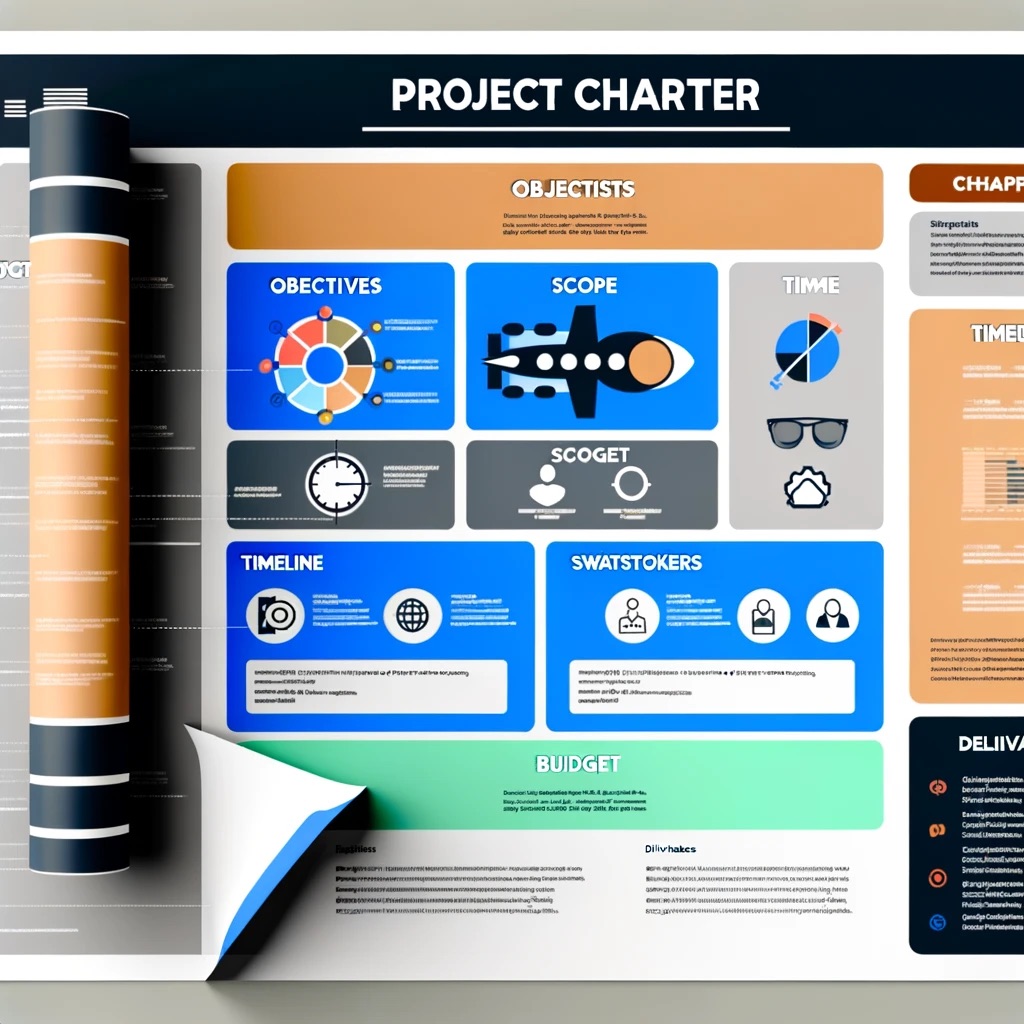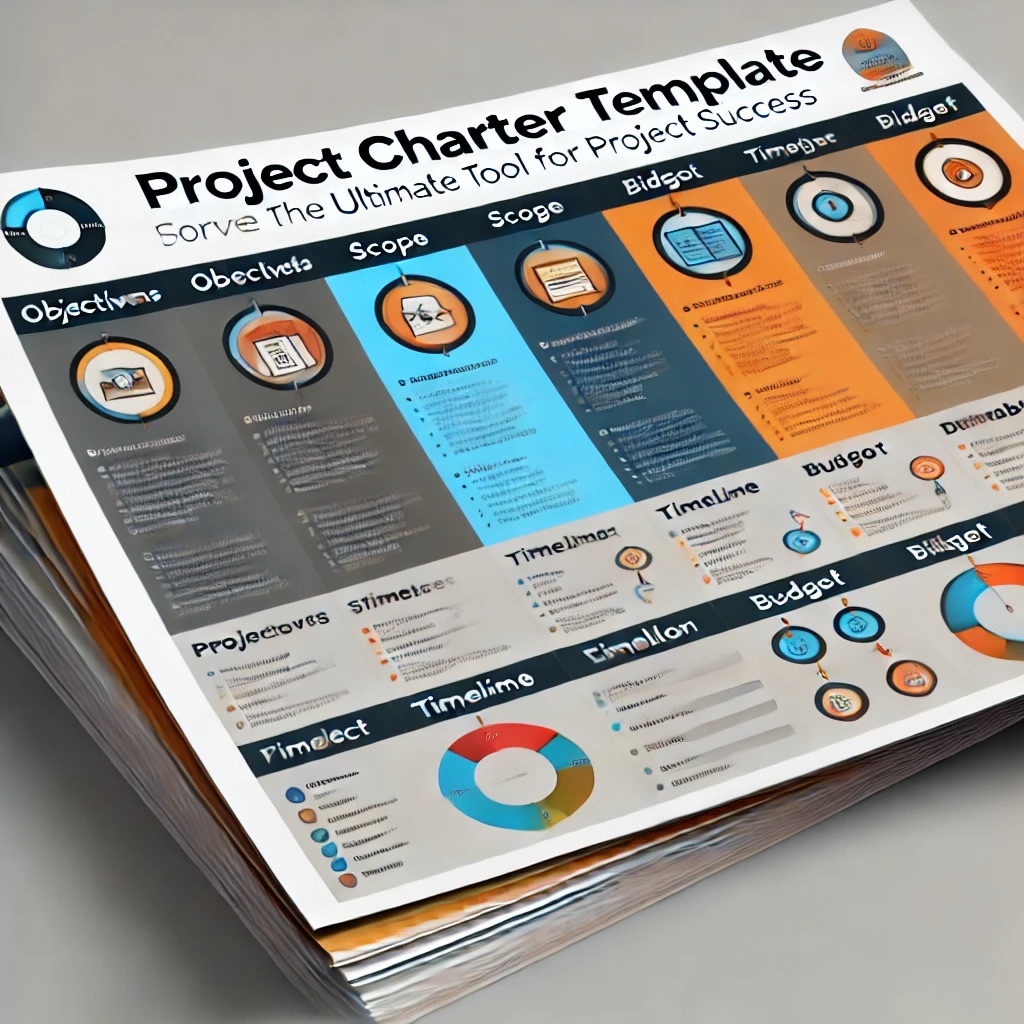Every successful project begins with a clear and detailed plan. Project charters are central to managing tasks and keeping everyone on the same page. A project charter defines project objectives, assigns responsibilities, and aligns the team toward a shared goal. It's an essential tool, providing all the critical information in one place for project sponsors, stakeholders, and team members.
In this guide, we’ll explain everything you need to know about creating a project charter, from software recommendations to essential components, with examples of customizable templates. Whether you’re managing a small team or overseeing a major initiative, a well-crafted project charter can help you maintain focus and clarity throughout the project lifecycle.

Recommended Software for Project Charters
Before diving into project charter details, it's essential to choose the right software for creating this document. Microsoft Office remains a top choice for professionals due to its accessibility, robust features, and ease of use. With programs like Microsoft Word and Excel, you can format tables, insert graphics, and organize your project charter in a clear and structured way.
Microsoft Office’s familiarity in the business world means minimal learning curve for your team, enabling seamless collaboration. Additionally, affordable options are available through platforms like RoyalCDKeys.
If you’re ready to jumpstart your project charter, we’ve provided some free template examples to streamline the process.
Project Charter Template Examples
Template #1: Comprehensive Project Charter This comprehensive template includes team roles, schedules, potential risks, and benefits. Suitable for both large and small projects, this agile project charter provides a strong foundation for effective project management.
Where to Download: SmartSheet
Template #2: Simple Project Charter For those managing smaller or less complex projects, this straightforward template covers essential elements without overwhelming detail. It’s ideal for tracking project basics and ensuring smooth operations.
Where to Download: Training Procept
Template #3: Advanced Project Charter This extensive template is perfect for complex projects, featuring sections for each project phase, a table of contents, and detailed fields for advanced planning. It’s especially useful for large projects requiring high levels of documentation.
Where to Download: TemplateArchive
What is a Project Charter?
A project charter is a high-level document that serves as a blueprint for project execution. It outlines the project’s purpose, scope, objectives, stakeholders, timeline, and deliverables. By consolidating all essential project information, the charter aligns stakeholders, team members, and sponsors, providing a clear pathway to achieving project goals.

Benefits of a Project Charter
- Improved Optimization: A well-defined project charter outlines roles and responsibilities, reducing overlap and increasing efficiency.
- Enhanced Clarity: Stakeholders and team members have a single reference for the project’s purpose, scope, and objectives.
- Data Gathering: Project charters document critical insights that can inform future projects, providing a valuable resource for long-term planning.
Key Elements of a Project Charter
1. Executive Summary
The executive summary is a brief overview of the project’s key components. Keep it concise, as each section will be expanded upon in the body of the charter.
2. Project Vision
The project vision describes the "why" behind the project. It provides context and purpose, helping the team connect to the project’s objectives on a deeper level.
3. Project Definition
The project definition outlines the specific outcomes the project seeks to achieve. This section should be clear and precise, detailing what success looks like and why it matters to the organization.
4. Goals and Objectives
Define measurable goals and set clear objectives. Include timelines for each goal, ensuring that objectives are both realistic and aligned with the project’s overall scope.
5. Project Scope
The scope of the project defines its boundaries, detailing what will and will not be included. A well-defined scope prevents scope creep, ensuring the project remains manageable and within budget.
6. Project Organization
This section defines the project’s organizational structure, including roles, responsibilities, and reporting lines. Specify each stakeholder's involvement and highlight cross-functional teams.
7. Stakeholders
List the key stakeholders, detailing their roles, interests, and influence on the project. Include primary sponsors, executive decision-makers, and external partners as applicable.
8. Customer Requirements
Describe the needs and expectations of the project’s end users or customers. Identify specific deliverables or milestones that will satisfy customer requirements.
9. Roles and Responsibilities
This section further details team roles, outlining individual responsibilities and expected contributions. This clarity allows team members to understand their part in achieving project goals.
10. Project Plan
A project plan lays out the roadmap for completing project tasks. Use a Gantt chart or similar project management tool to outline each stage, including short- and long-term goals, and assign deadlines for each milestone.
11. Budget and Financial Plan
Provide a detailed budget, breaking down expenses by category (e.g., labor, materials, travel). Include any contingency funds to cover unexpected costs.
12. Timeline and Milestones
Establish a project timeline, detailing key milestones. Milestones indicate critical phases of the project and serve as checkpoints for assessing progress.
13. Risk Management Plan
Identify potential risks, including their probability and impact on the project. Outline mitigation strategies to minimize these risks and assign responsibilities for monitoring and responding to them.
14. Approval and Authorization
Define who has the authority to approve and make changes to the project charter. This section is crucial for maintaining accountability and ensuring that decisions align with the organization’s objectives.
15. Appendices and Supporting Documents
Include any additional documents, such as flowcharts, business cases, or reference materials, that provide context or additional guidance for the project.
Project Charter vs. Other Project Documents
Project Charter vs. Statement of Work (SOW)
The Statement of Work is similar to a project charter but typically focuses on deliverables, deadlines, and work expectations. While an SOW specifies the “what” of a project, the project charter explains the “why” and provides the authority to begin work.
Project Charter vs. Project Proposal
A Project Proposal is submitted during the project’s planning phase to secure approval. It outlines the project’s purpose and expected benefits but lacks the specific details of a charter. Once the proposal is accepted, the project charter is created to formally launch the project.
Steps to Create a Project Charter
- Draft an Executive Summary: Summarize the project’s purpose and scope in a few sentences to provide an overview.
- Define the Project Vision: Clarify the primary objective, helping to inspire and align the team with the project’s purpose.
- Outline Goals and Objectives: Set specific, measurable objectives that guide the project’s success. Make sure each goal is achievable within the project timeline.
- Determine the Project Scope: Define what the project will address and exclude to prevent misunderstandings and scope creep.
- Assign Roles and Responsibilities: Identify key roles and assign responsibilities to ensure accountability.
- Develop the Project Plan: Outline the roadmap, using tools like Gantt charts to map each stage.
- Establish a Budget: Provide detailed cost estimates to secure necessary resources.
- Identify Risks: Anticipate potential challenges, and develop strategies to mitigate them.
- Add Supporting Documentation: Attach relevant documents and references to strengthen the charter.
- Finalize and Approve: Obtain final approval from project sponsors and stakeholders to authorize the project’s launch.
Free Project Charter Templates
- Simple Project Charter Template: Ideal for small teams and simple projects.
- Available on SmartSheet
- Comprehensive Project Charter Template: Suitable for complex projects requiring detailed tracking.
- Available on Procept
- Advanced Project Charter Template: Designed for large-scale initiatives with detailed requirements.
- Available on TemplateArchive
Conclusion
A well-structured project charter is essential for launching successful projects. This document sets clear expectations, organizes tasks, and aligns stakeholders, ensuring everyone is on the same page. By investing time in developing a thorough project charter, you streamline processes, improve communication, and increase the likelihood of achieving project goals.
From setting budgets to defining roles, the project charter is a roadmap that guides your team through each phase of the project. As you develop and refine your charter, you’ll find it becomes an invaluable resource for keeping your projects on track and on budget.
Source: Project Charter Template - Keep Track of Your Project!
Read also our last article: Simple Steps to Build a Cost-Benefit Analysis Template